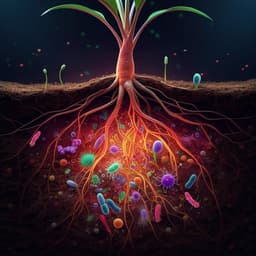
Chemistry
Mechanochemical nitrogen fixation catalysed by molybdenum complexes
S. Suginome, K. Murota, et al.
This groundbreaking research conducted by Shun Suginome, Kurumi Murota, Akira Yamamoto, Hisao Yoshida, and Yoshiaki Nishibayashi explores a novel method for catalytic mechanochemical nitrogen fixation using molybdenum complexes, achieving impressive ammonia production from atmospheric dinitrogen under eco-friendly conditions.
Playback language: English
Related Publications
Explore these studies to deepen your understanding of the subject.







